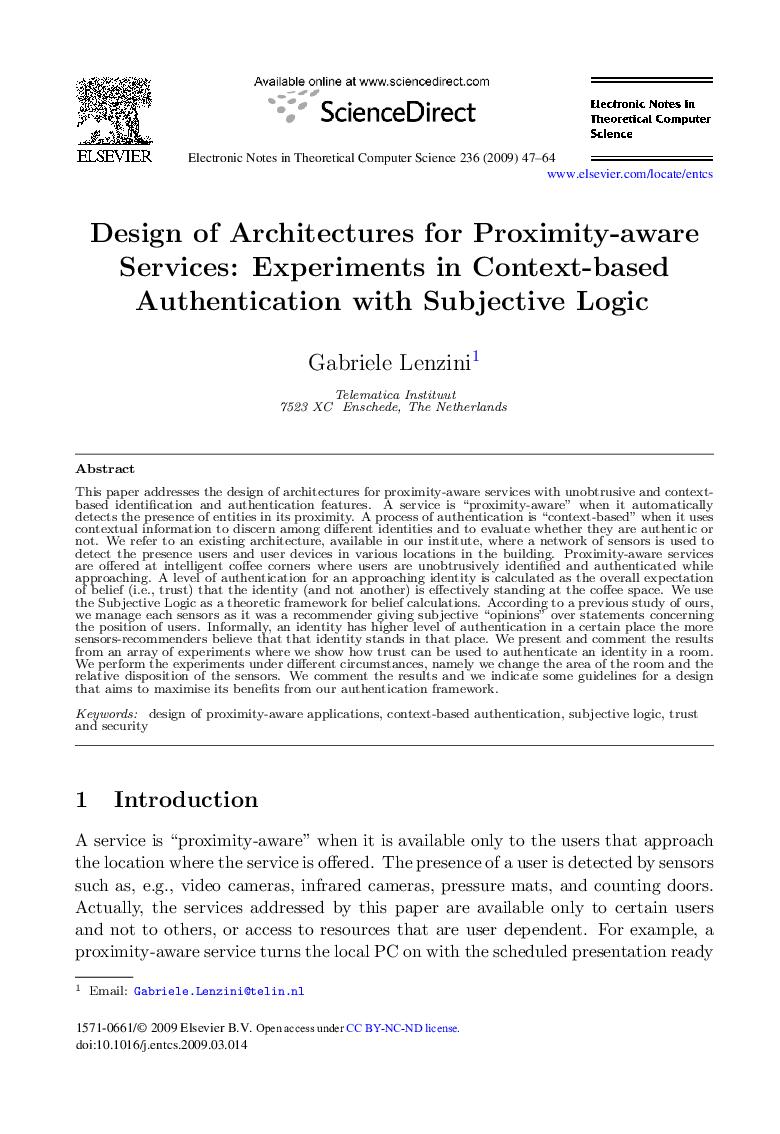| کد مقاله | کد نشریه | سال انتشار | مقاله انگلیسی | نسخه تمام متن |
|---|---|---|---|---|
| 423518 | 685248 | 2009 | 18 صفحه PDF | دانلود رایگان |

This paper addresses the design of architectures for proximity-aware services with unobtrusive and context-based identification and authentication features. A service is “proximity-aware” when it automatically detects the presence of entities in its proximity. A process of authentication is “context-based” when it uses contextual information to discern among different identities and to evaluate whether they are authentic or not. We refer to an existing architecture, available in our institute, where a network of sensors is used to detect the presence users and user devices in various locations in the building. Proximity-aware services are offered at intelligent coffee corners where users are unobtrusively identified and authenticated while approaching. A level of authentication for an approaching identity is calculated as the overall expectation of belief (i.e., trust) that the identity (and not another) is effectively standing at the coffee space. We use the Subjective Logic as a theoretic framework for belief calculations. According to a previous study of ours, we manage each sensors as it was a recommender giving subjective “opinions” over statements concerning the position of users. Informally, an identity has higher level of authentication in a certain place the more sensors-recommenders believe that that identity stands in that place. We present and comment the results from an array of experiments where we show how trust can be used to authenticate an identity in a room. We perform the experiments under different circumstances, namely we change the area of the room and the relative disposition of the sensors. We comment the results and we indicate some guidelines for a design that aims to maximise its benefits from our authentication framework.
Journal: Electronic Notes in Theoretical Computer Science - Volume 236, 2 April 2009, Pages 47-64